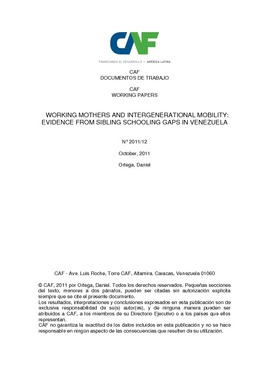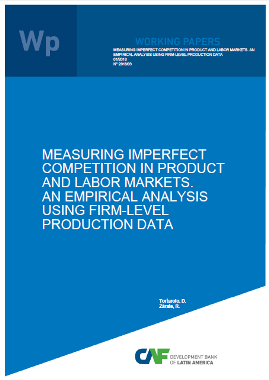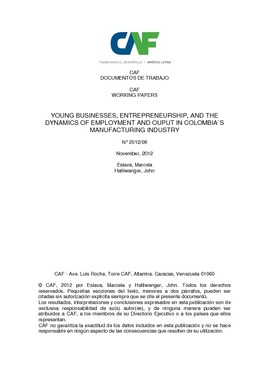The Life-cycle Growth of Plants in Colombia: Fundamentals vs. Distortions
Resumen
We take advantage of rich microdata on Colombian manufacturing establishments to decompose growth over an establishment’s life cycle into that attributable to fundamental sources of idiosyncratic growth ̶ physical productivity, demand shocks (firm appeal), and input prices ̶ and distortions that weaken the link between those fundamentals and actual growth. We accomplish this using data on quantities and prices for individual products for each manufacturing establishment. Pooling all ages, measured fundamentals explain around 75% of the variability of output relative to birth level, with the remaining 25% explained by distortions and other unobserved factors. Demand shocks and TFPQ are equally important in the explained part, while input prices play a more minor role. Distortions explain more than 50% of the variance in growth up to age seven, but their contribution falls to less than 25% by around age 20. For the fraction explained by fundamentals, early life growth variation is explained by TFPQ with demand and input prices playing a minor role. But demand is the crucial factor in variation in long-run growth, with a contribution that surpases that of TFPQ and unobserved factors by around age 15. In the 2000s compared to the 1980s, two decades separated by a wave of deep structural reforms, the contribution of TFPQ to the variance in life cycle growth grows by around 6 p.p , compensated by a lesser role for input prices and, interestingly, distortions.
Materia
País / Región
Fecha
2017-10-05Citar de esta publicación
Item perteneciente a la Colección
Autor
Eslava, MarcelaHaltiwangerz, John
Items Relacionados
Working mothers and intergenerational mobility: evidence from sibling schooling gaps in Venezuela
This paper documents the change in intergenerational mobility over the 35 year period between 1975 and 2010 in Venezuela and finds that equality of ...
Measuring Imperfect Competition in Product and Labor Markets. An Empirical Analysis using Firm-level Production Data
In this paper, we develop a simple theoretical model that allows us to disentangle empirically the extent of imperfect competition in product and labor ...
Young businesses, entrepreneurship, and the dynamics of employment and ouput in Colombia´s manufacturing industry
In this paper, we study the characteristics and growth dynamics of young businesses, and the contribution of these businesses to aggregate growth, in a ...






